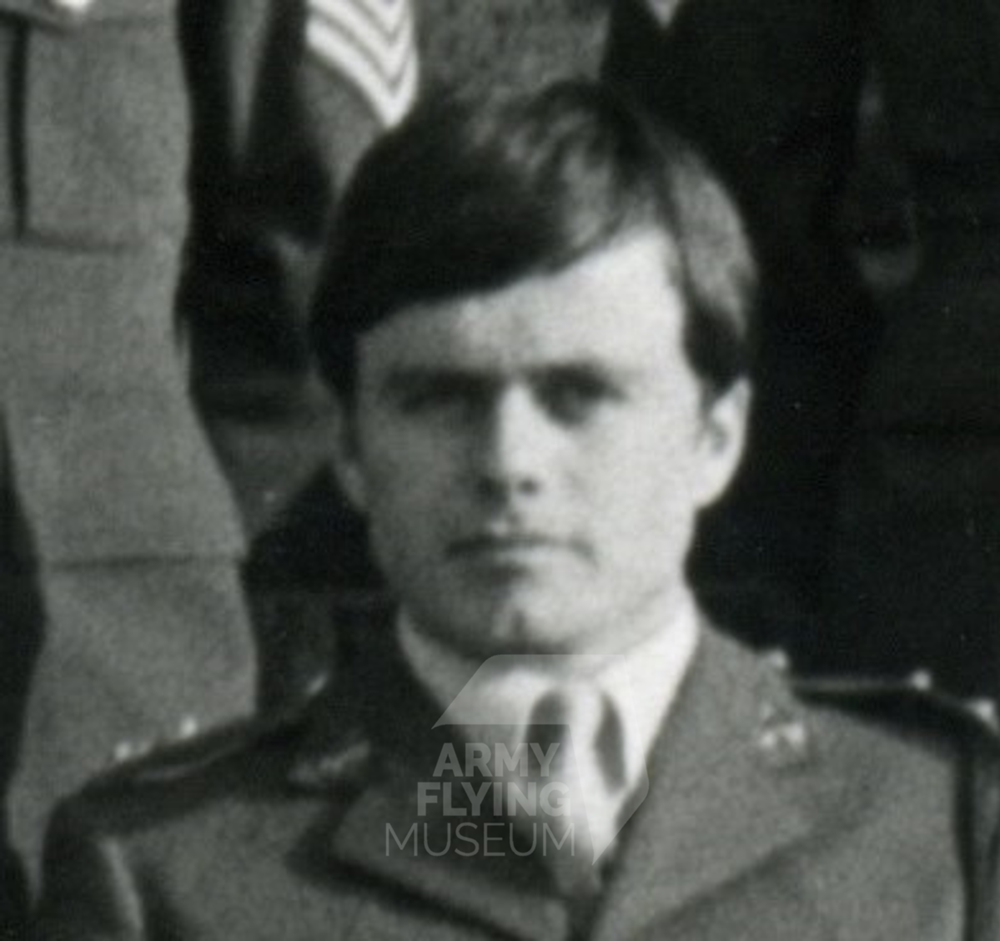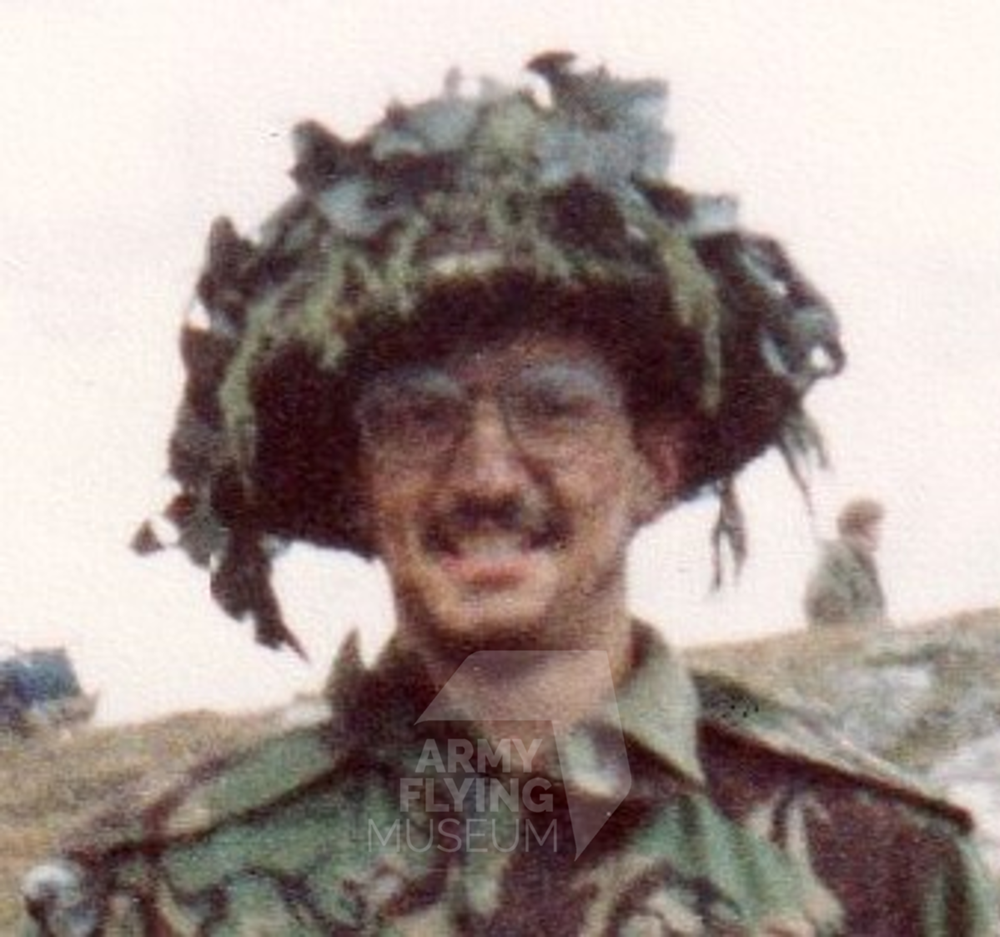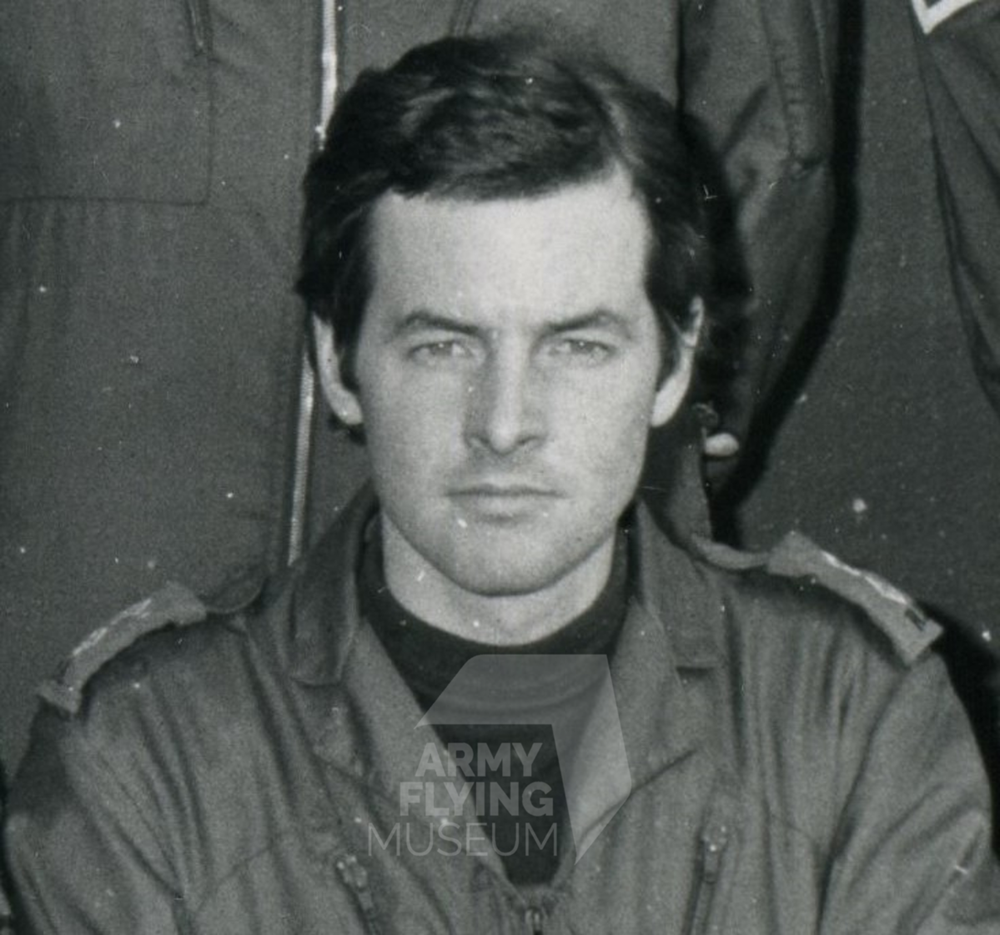The Falklands War
On 2 April 1982, Argentine forces moved into the Falkland Islands and claimed the territory as part of Argentina, despite the Falklands Islanders having the right to self-determination. This was the move which would lead to armed conflict between Argentina and the United Kingdom, and which would see 656 Squadron Army Air Corps (AAC) deployed to the harsh climate of the Falkland Islands.
This online exhibition aims to establish the history of Operation CORPORATE as seen through the eyes of members of 656 Squadron to provide a view of the conflict from the ground and the air. The following clips are taken from the Army Flying Museum’s Oral History Project. The four participants in the Project who spoke about the Falklands and who you will hear throughout the exhibition are the following:
Throughout the exhibition there are also images to help display the events which took place during the conflict. These images are taken from the Army Flying Museum Archive and the 656 Squadron Association digital archive collection. Many of the images come from the donated collections of Colin Sibun, Philip Piper, and Neil Maher.
This history of the Falklands War begins with Capt. John Greenhalgh who was chosen to travel south earlier than the rest of 656 Squadron as part of the Advance Section (AS), along with half of his Scout Flight. This consisted of three Scout helicopters: XR628, XT637, and XT649. Initially, it was meant to have been 658 Squadron AAC that accompanied 2nd Battalion the Parachute Regiment (2 PARA) on their journey south, but they were well below their normal establishment. Also, another factor which led to 656 Squadron being selected was their links with 2 PARA as they had already been on exercise with each other, so the two units had grown familiar. The three Scouts of 656 Squadron and their crews travelled out on the ‘Europic Ferry’ on 22 April and, until the main part of 656 Squadron travelled out, were integrated into 3 Commando Brigade Air Squadron (CBAS) and retitled 5 Flight (656) 3 CBAS. In the clip below, Capt. Greenhalgh discusses why the Squadron was chosen to go south, the training that the AS conducted on the journey, and the first task the Scouts received upon reaching San Carlos Bay, in the Falkland Islands:
One of the most significant events that Capt. Greenhalgh was involved in, before the rest of 656 joined the AS, was the battle of Goose Green. On 28 May 1982, 656 Squadron Scouts XT637 and XT649 were converted into the casualty evacuation (CASEVAC) role, to support 2 PARA’s assault to take the settlement from a large Argentine force. The following clip is of Capt. Greenhalgh praising 2 PARA for the role they played, and the tasks that the helicopters were carrying out, including moving Argentine casualties the next day. When he talks about the “red and green life machine”, he is referencing the Ajax Bay field hospital, where casualties from both sides were successfully treated:
Whilst the AS and 3 CBAS were operating in the Falkland Islands, the rest of 656 Squadron were travelling south. The Scout Flight with its three remaining aircraft and the Gazelle Flight, consisting of six aircraft, were transported on the ‘Baltic’ and ‘Nordic’ ferries, which departed from Southampton in the early hours of 9 May. The main party embarked on the ‘Queen Elizabeth II’ (‘QEII') cruise ship a few days later on 12 May. We can hear about the preparation to depart and the start of 656 Squadron’s journey from Maj. Colin Sibun, Capt. Philip Piper, and Cpl. Neil Maher (at the start of the conflict he was Lance Corporal) who was a signals specialist attached to 656 Squadron:
On the journey down, the Scout and Gazelle flights took part in training where they learnt how to fly off ships both during the day and at night. Capt. Piper discusses this training below. In the same clip, Cpl. Maher discusses the signallers’ preparations on the journey, which involved weapons training and using the signals equipment:
On 1 June, ‘Baltic Ferry’ arrived in San Carlos Water where the remainder of Scout Flight offloaded to join up with 2 PARA. Meanwhile, when the ‘QEII’ reached South Georgia on 27 May, the personnel onboard transferred over to the ‘Canberra’, which then sailed into San Carlos Water on 2 June. Below, Maj. Sibun discusses the final stage of 656 Squadron’s journey, and then Cpl. Maher describes his dramatic journey to shore:
Soon after their arrival in San Carlos, it was necessary for 656 to receive an update on the progression of the conflict, as well as brief training from Capt. Greenhalgh on how best to operate as helicopter flights in the Falkland Islands. In the clip below you can hear Capt. Greenhalgh talking about the training for the new arrivals. A particularly important aspect of this training was a discussion around refuelling the helicopters and the necessity to never completely fill the helicopter’s fuel tank, as then you would not be able to conduct emergency tasks, such as CASEVACs or ferrying troops, because the aircraft would be too heavy.
Capt. Greenhalgh and his Scout Flight were further involved in direct action on 2 June, when they supported 2 PARA with their assault on Swan Inlet House. Five Scouts took part, with two equipped with SS11 missiles and three carrying paratroopers. As Capt. Greenhalgh explains below, the mission was not a total success, but this did not matter as Swan House was unoccupied, with the Argentines having already retreated:
The most challenging time for 656 was the night of the 5/6 June when the Squadron’s only losses of life throughout the conflict occurred. Gazelle XX377 crewed by Staff Sergeant Chris Griffin and Lance Corporal Simon Cockton, was tasked with flying two members of the Royal Corps of Signals, Maj. Mike Forge and Staff Sergeant John Baker, to service a rebroadcast station. Sadly, as they flew up to the station they were shot down by friendly fire. The ship, HMS Cardiff, which hit them, was following the existing Rules of Engagement so the subsequent Board of Inquiry recommended that negligence and blame should not be attributed to any individual. It was a tragic accident and below Cpl. Maher, Maj. Sibun, and Capt. Greenhalgh talk about what happened and their involvement after the event occurred:
Another tragic incident which Capt. Piper talks about in his recording was the bombing of ‘Sir Galahad’ and ‘Sir Tristram’, which took place on Friday 8 June. They were both Royal Fleet Auxiliary support ships which had been targeted by Argentine jets. Capt. Piper was involved in CASEVACs after they were hit and, in this clip, he talks about his experience of transporting the casualties:
On their way to attack ‘Sir Galahad’ and ‘Sir Tristram’, some of the Argentine Skyhawk aircraft passed over Scout XR628, crewed by Sergeant (Sgt.) Richard Kalinski and Lance Corporal Julian Rigg. When the aircraft went overhead, Sgt. Kalinski performed an evasive manoeuvre by dropping down near the ground and hovering above Macphee Pond. However, when he tried to pull up afterwards, his tail rotor driveshaft suffered a failure and the Scout crashed into the pond. Sgt. Kalinski’s OC, Maj. Sibun, recalls hearing about the accident in the clip below:
Throughout the conflict, 656 Squadron worked closely with both the Royal Navy and the Royal Air Force in their operations, as well as working especially closely with the troops on the ground, with most of their tasking focused on aiding them. Below, Capt. Piper talks about the affinity he, and many others, felt with the ground troops who were fighting in difficult conditions. Capt. Greenhalgh also talks about the bond between his Scout Flight and 2 PARA, who they had got to know particularly well on exercise in the year before the Falklands conflict began:
On 9 June, the Squadron Headquarters with both the Gazelle and Scout Flights moved forward to Fitzroy. This was in preparation for the major assault by 3 Commando Brigade on Two Sisters, Mount Harriet, and Mount Longdon, which aimed to open the path into Stanley. For these assaults, Scouts XT637 and XT649 were placed under the temporary command of 3 CBAS, to support 2 PARA. Both Capt. Piper and Capt. Greenhalgh discuss these final offensives below, while the clip below that is of Cpl. Maher talking about his experience during a 3 PARA attack at night:
The following clip features Capt. Greenhalgh talking about taking out an Argentine battery position during the attacks on Stanley. It was not often that the Scout helicopter played an offensive role during the conflict but, when it did, it made a positive difference, especially on the occasion spoken about below:
Following on from hearing about the offensive role of the Scouts, Maj. Sibun talks at the start of the below clip about the actions of the Scouts and the tasking which they undertook. The Gazelle also stood out during the conflict for its support role, and in the same clip Capt. Piper talks about the tasking which he undertook, in particular CASEVACs. The last section of the clip below features Capt. Greenhalgh explaining how they would help other units even without any tasking instructing telling them to do so:
Tasking in the Falklands was far from straightforward for members of 656 however, and they faced enormous challenges during the conflict. One of the main problems was the climate of the Falkland Islands given that the war took place during their winter months. For pilots there was therefore an increased chance of cloudy conditions, including low lying cloud over the mountains, making flying conditions dangerous and tricky. Members of 656 Squadron were also flying long hours due to the amount of tasking combined with a shortage of pilots and aircraft. Squadron personnel who were mainly on the ground also struggled in the Falklands environment. Cpl. Maher tells a story in the clip below of how challenging it was just to go about his daily tasks:
The final stage of the conflict was the push into Port Stanley and the Argentine surrender. Their surrender took place on the 14 June 1982, after the attacks on Wireless Ridge and Tumbledown. Capt. Piper was one of the first into Port Stanley after the surrender and he discusses the push into Stanley below. The clip also features Maj. Sibun talking about hearing news of the ceasefire and a moving moment he experienced soon after, whilst Cpl. Maher explains his feeling of being cheated by the surrender:
After the ceasefire 656 Squadron still had plenty of work to do, meaning that they stayed on in the Falklands until the start of August. Below, Maj. Sibun remembers finding the Argentine Bell UH-1 Iroquois “Huey” helicopters at Port Stanley, before Capt. Piper discusses his role after the fighting finished, which involved supporting the Gurkha Regiment. He also talks about his memory of the Argentine prisoners captured in Port Stanley:
We heard about the important role of the Scout helicopters in an offensive capacity earlier on, but it is important to recognise how crucial all Army aviation was to the success of British Forces in the Falklands War. As has been shown throughout the exhibition, 656 Squadron was involved throughout the fighting in numerous ways. They successfully evacuated a great number of casualties, moved supplies and troops across difficult terrain, conducted observation and reconnaissance, and rose to the challenge of fighting the enemy. Army aviation was not only a success through 656 Squadron; 3 CBAS also played a pivotal role with their Scout helicopters and some of the most important work carried out by the three Scouts of Capt. John Greenhalgh’s AS was as a part of 3 CBAS. The final clip below, featuring Capt. Greenhalgh and Maj. Sibun, highlights the importance of the Army aviation role in the conflict:
Over the course of the Falklands conflict, 656 Squadron completed 588 operational flying hours. This would have not been possible without the Squadron’s Royal Electrical and Mechanical Engineers (REME) section, who kept at least 90% of their aircraft available at any one time during the campaign. Overall, 656 Squadron evacuated 195 casualties, including rescuing at least 20 Argentine personnel. This was an incredible effort and meant that the Squadron saved many lives.
Exhibition created by Henry Whitington, Archive Assistant, 2022





